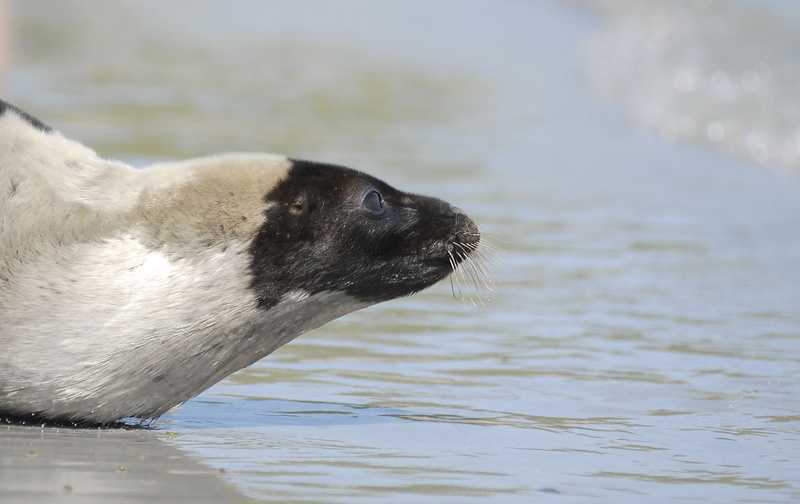If you spend time on the Gulf of Maine, no doubt you have seen seals popping their heads out of the water, sunning themselves on a ledge, or perhaps on a beach.
And this time of year, there is a good chance you may see a seal pup. After all, it is estimated that each year in the Gulf of Maine, more than 20,000 Atlantic harbor seal pups are born, usually between late April and early June.
Female harbor seals generally give birth to one pup. Newborn pups weigh up to 30 pounds, and by the time they are weaned from their mothers, they weigh 40 to 50 pounds, far short of the 250 to 300 pounds of an adult harbor seal.
Invariably, these pups find their way to where there are people. It may be along some cove, perhaps a popular coastal island kayaking destination, or even a crowded, sandy beach. And when people come across a seal pup along the coast, many times they believe it has been abandoned.
However, many of these seals have not been stranded. They may be on shore to help regulate their body temperatures. Their mothers may have left them on the beach on an outgoing tide, and will return with the incoming tide. Or they just may be exhausted, and have come on shore to rest, possibly for hours or the day.
So what do you do if you see a seal pup you think has been abandoned? First, leave it there. Too many young seals have been orphaned or injured by well-meaning people who tried to rescue pups themselves. Under the Marine Mammal Protection Act, it is also illegal to handle these animals.
What you should do is call the Maine Marine Mammal reporting hot line (1-800-532-9551).
Once you call, one of about 30 area volunteers will come and observe the animal to determine whether it has been abandoned or not. Sometimes it can be obvious, but other times, not so clear.
“If the animal is just skin and bones, if it is clear that this animal hasn’t been feeding with mom, or if there are other illnesses apparent, we will intervene,” said Lynda Doughty, stranding coordinator for the Department of Marine Resources, who covers an area in Maine that stretches from the New Hampshire border to Rockland.
“We look at body condition, behavior; we go through tide cycles, and it can depend on how long before she (the mother) comes back. After a period of time, and it can be up to a couple of days, and we haven’t seen anything come and check — we will intervene at that point,” Doughty said.
The seal usually is taken to the University of New England’s Marine Animal Rehabilitation Center in Biddeford, or if it has no openings, the animal will go to the Mystic Aquarium in Connecticut. There it is rehabilitated, and once healthy, released back into the wild.
Doughty said that in the past they have monitored up to 20 pups at different locations at one time. Over the course of the year, Doughty says they will get 300 to 400 reports of strandings, and close to 100 of those will result in animals that need to go to rehabilitation.
With more people enjoying Maine’s coast and exploring its islands, chances are many will cross paths with seals. Enjoy them from a distance, and if you do see one that looks sick or possibly abandoned, call the experts.
Mark Latti is the former public information officer for the Maine Department of Inland Fisheries and Wildlife and a Registered Maine Guide. He can be reached at:
mlatti@gmail.com
Send questions/comments to the editors.



Success. Please wait for the page to reload. If the page does not reload within 5 seconds, please refresh the page.
Enter your email and password to access comments.
Hi, to comment on stories you must . This profile is in addition to your subscription and website login.
Already have a commenting profile? .
Invalid username/password.
Please check your email to confirm and complete your registration.
Only subscribers are eligible to post comments. Please subscribe or login first for digital access. Here’s why.
Use the form below to reset your password. When you've submitted your account email, we will send an email with a reset code.